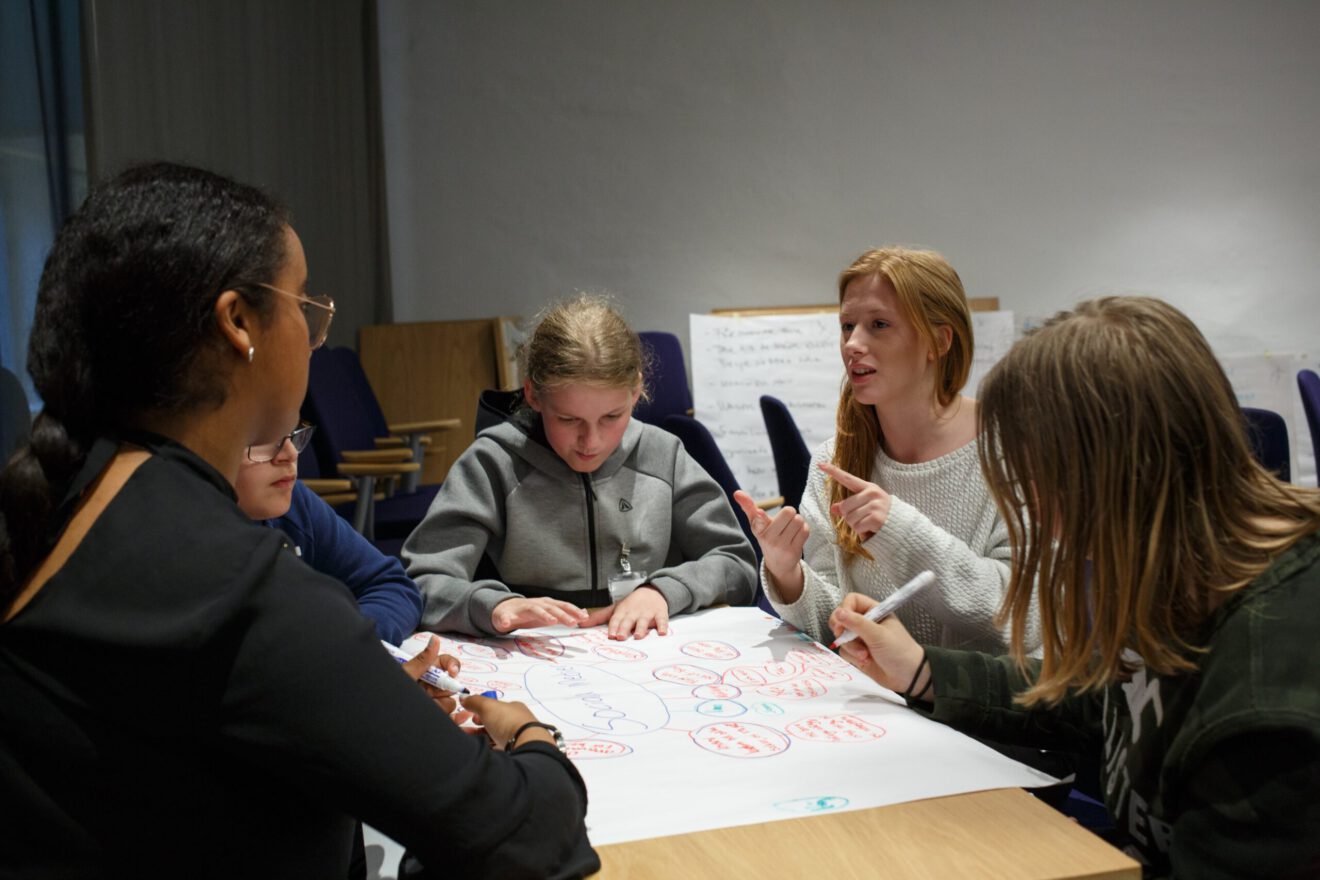Sign up for our social studies news briefing today, free.
Middle-school students are at a unique age — they are no longer children but they are not adults yet either. They are inquisitive; they want to understand the world they live in. And they’re eager to discuss the hot issues of the day — the 2020 presidential election, vaccines, gun control, abortion, religious freedom, climate change.
But controversy can be uncomfortable. Some administrators direct teachers to avoid sharing their opinions or discussing topics that are sensitive or political in nature. This is the wrong approach, says Alyssa Hadley Dunn, assistant professor of teacher education at Michigan State University, in an article for the National Education Association.
“Everything in education — from the textbooks to the curriculum to the policies that govern teachers’ work and students’ learning — is political and ideologically-informed,” she says in the story. “Both what is taught and how it is taught is shaped by the cultural, social, political, and historical contexts in which a school is situated. We can’t pretend that teachers can leave these contexts at the door.”
Students have real fears and concerns. The classroom is a safe place for them to wrestle through these challenges. Here’s how we teach students the importance of civic responsibility and how to express their ideas in a thoughtful, constructive manner.
Lesson structure
Planning a lesson about a provocative topic isn’t very different from preparing other activities. The biggest task for educators is to pay attention to current events. If there’s a topic you’d like to include in class, reflect on the following questions:
-
Do I have a full understanding of the issue?
-
Do I understand both sides of the issue?
-
Why is this issue meaningful to students?
Also, be sure to consult trusted resources before introducing a topic in class. Here are some I use:
-
ProCon.org is a non-profit providing research on pros and cons of controversial issues. The resource is free to use.
-
AllSides is another free resource providing balanced news via media bias ratings for different articles.
-
FactCheck.org is a project of the Annenberg Public Policy Center of the Annenberg School for Communication at the University of Pennsylvania. Most of its content consists of rebuttals to what it considers inaccurate, misleading or false claims by politicians.
Student-led learning
There’s a myriad ways you can present topics to your class. I will have students read an article or watch a video, then write their reflections in journals or on a discussion post. Afterward, we conduct a mini-debate in class.
During these debates, I ask students if they are for, against or unsure of where they stand on an issue. I group them according to their responses, with the unsure students in the middle.
And then I let the students lead the discussion. Each group of students gives their rationale, and undecided students have an opportunity to vote on what they believed was most persuasive in the arguments.
Let me be clear: This is not about winning or losing — it’s about engaging in respectful dialogue. And it’s working. This year, a student told me, “Mr. Allen, it’s so cool we get to have these conversations in school — we don’t get to do this in other classes.”
Finding a voice
Discussing controversial subjects helps students discover their own viewpoints. Some students don’t have a chance to be heard outside of the classroom. Educators can provide that valuable space.
Students must have a chance to discuss these topics before they get to high school. Otherwise, they risk missing out on an important learning experience. More state assessments require students to be critical thinkers. I use a “prove it” approach in the classroom. Students must use evidence-based problem-solving to prove what they say.
The 2020 Presidential Election is fast approaching. Now is the time to put these discussion strategies into practice. Bring the tough topics into your classroom. Let students ask the hard questions and debate the answers, with honesty and decorum. They will improve with practice. They will be able to build an argument and give voice to their ideas. They will know how to listen, with patience and courtesy, to other viewpoints. They will master the art of civil discussion.
Jerome Allen is a social studies teacher at Bay View Middle School in Green Bay, Wisconsin. He uses Achieve3000’s Actively Learn platform in his classroom.
______________________________________________________________________________________________________
Like this article? Sign up for NCSS SmartBrief to get news like this in your inbox, or check out all of SmartBrief’s education newsletters, covering career and technical education, educational leadership, math education and more.
